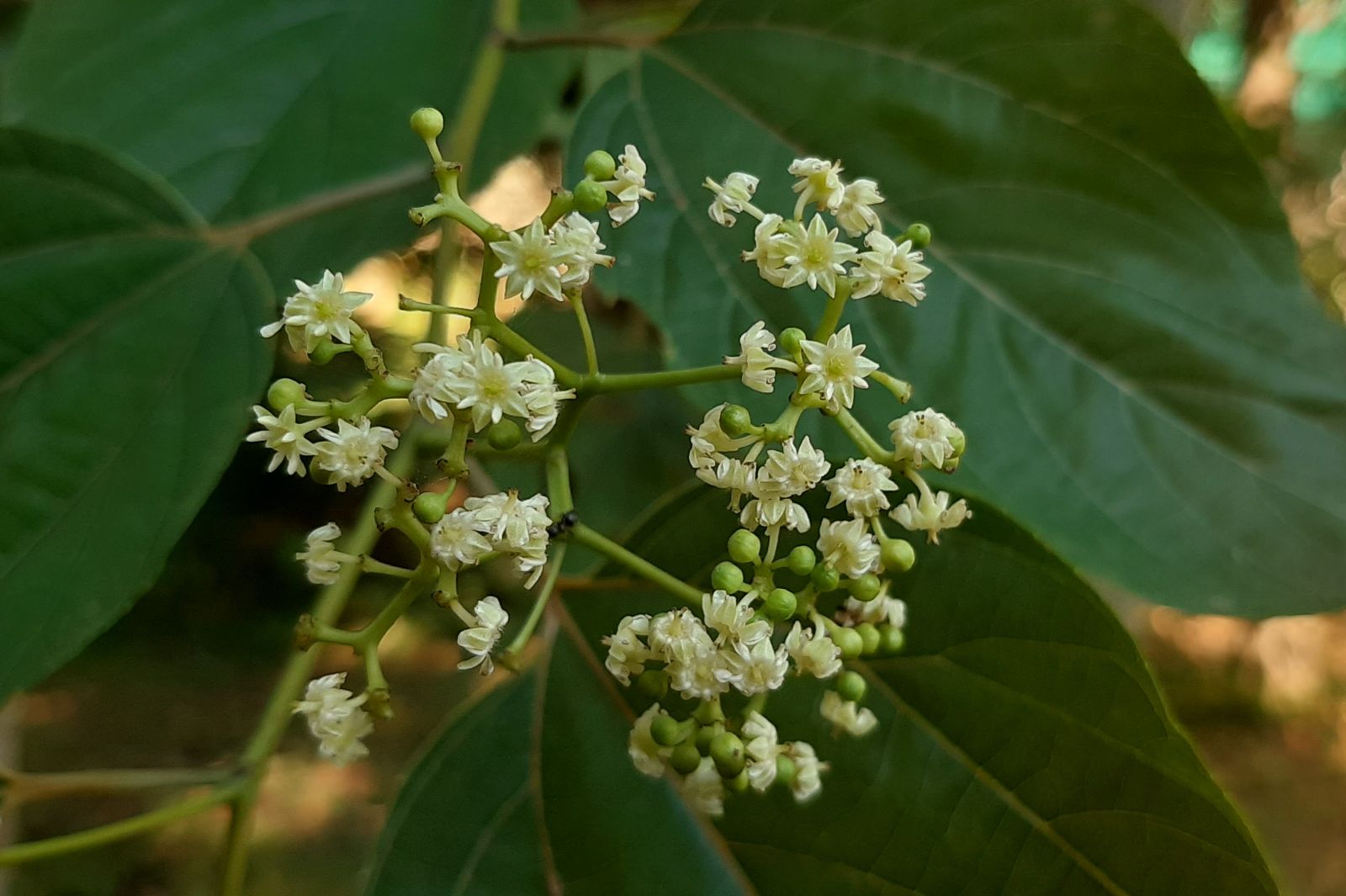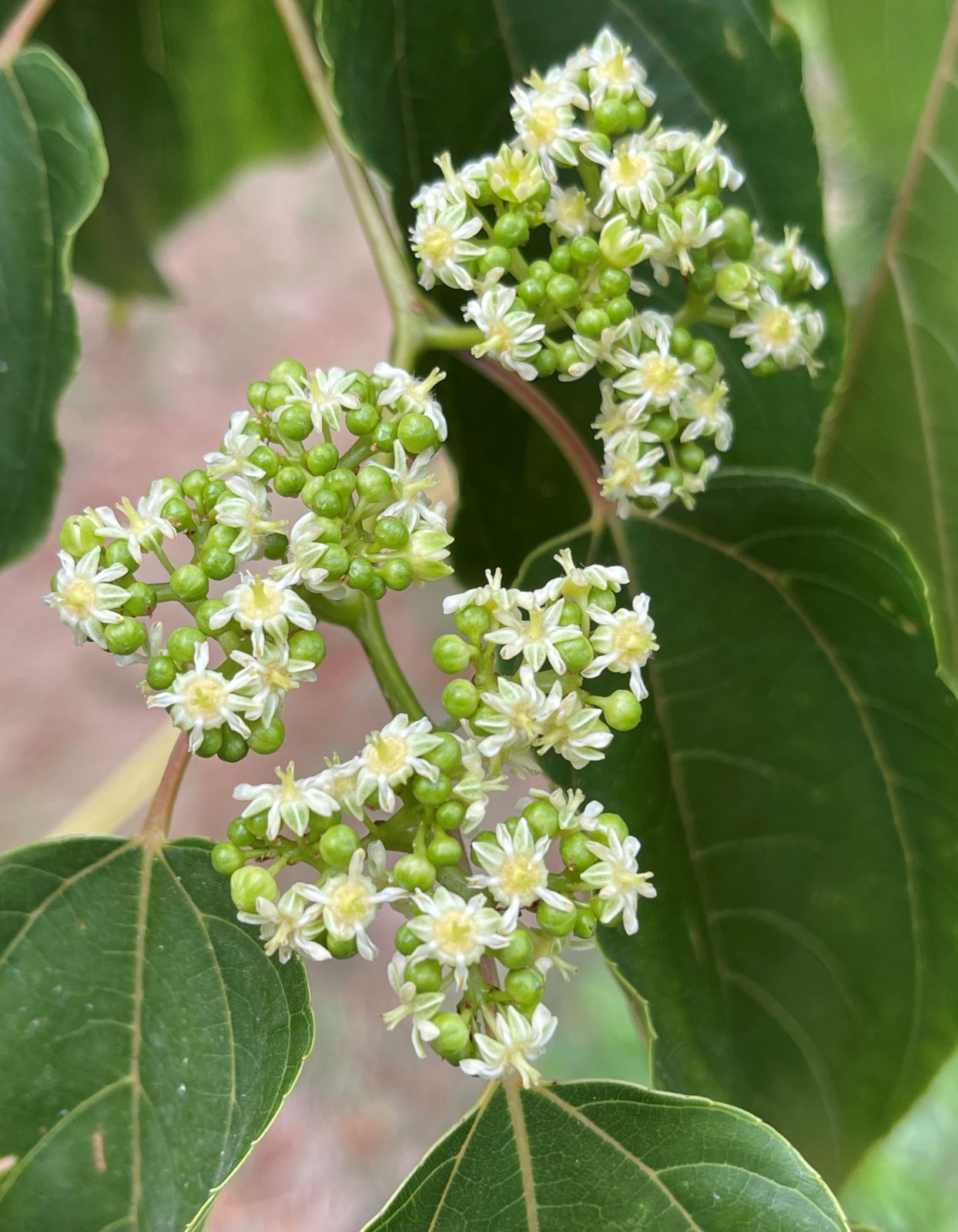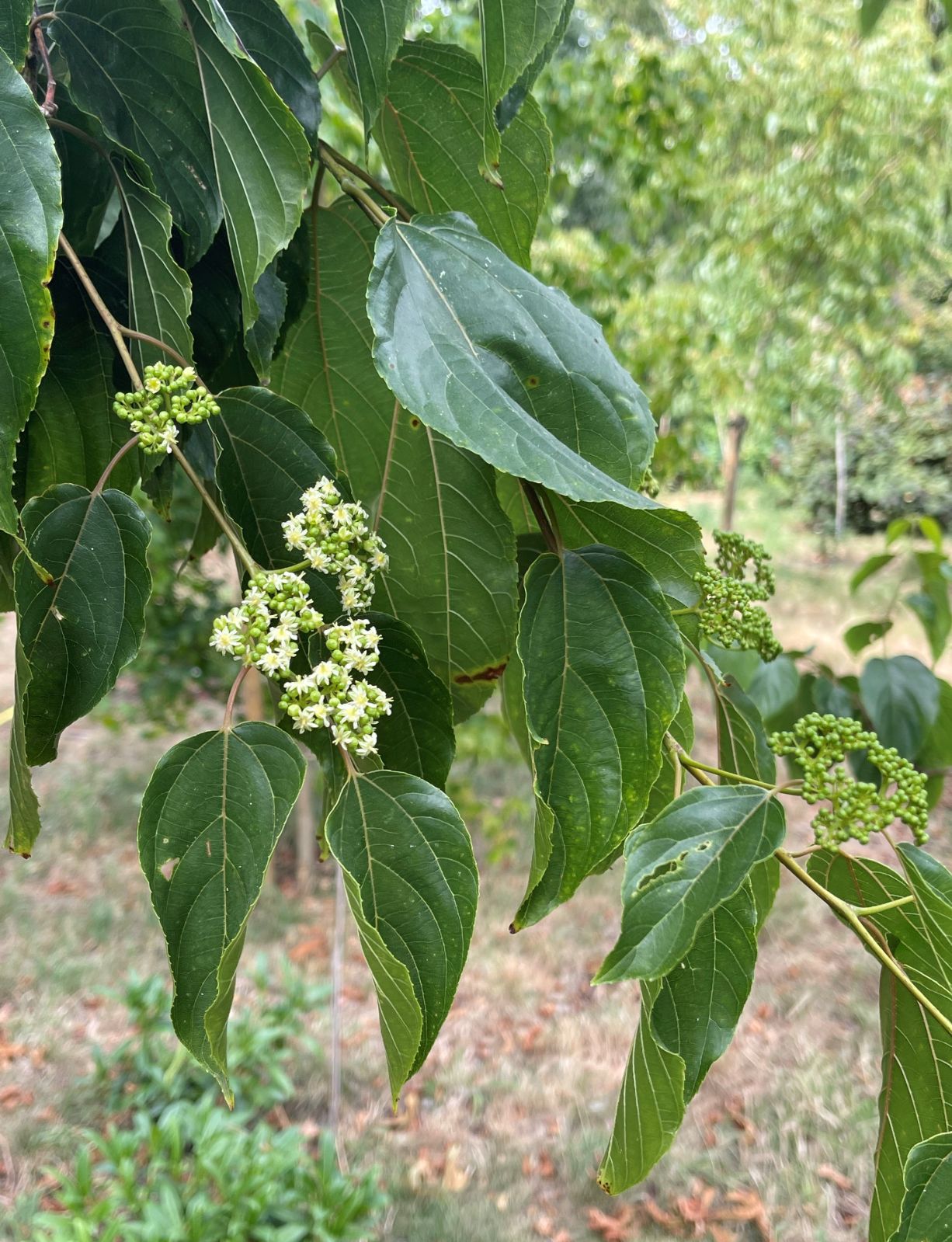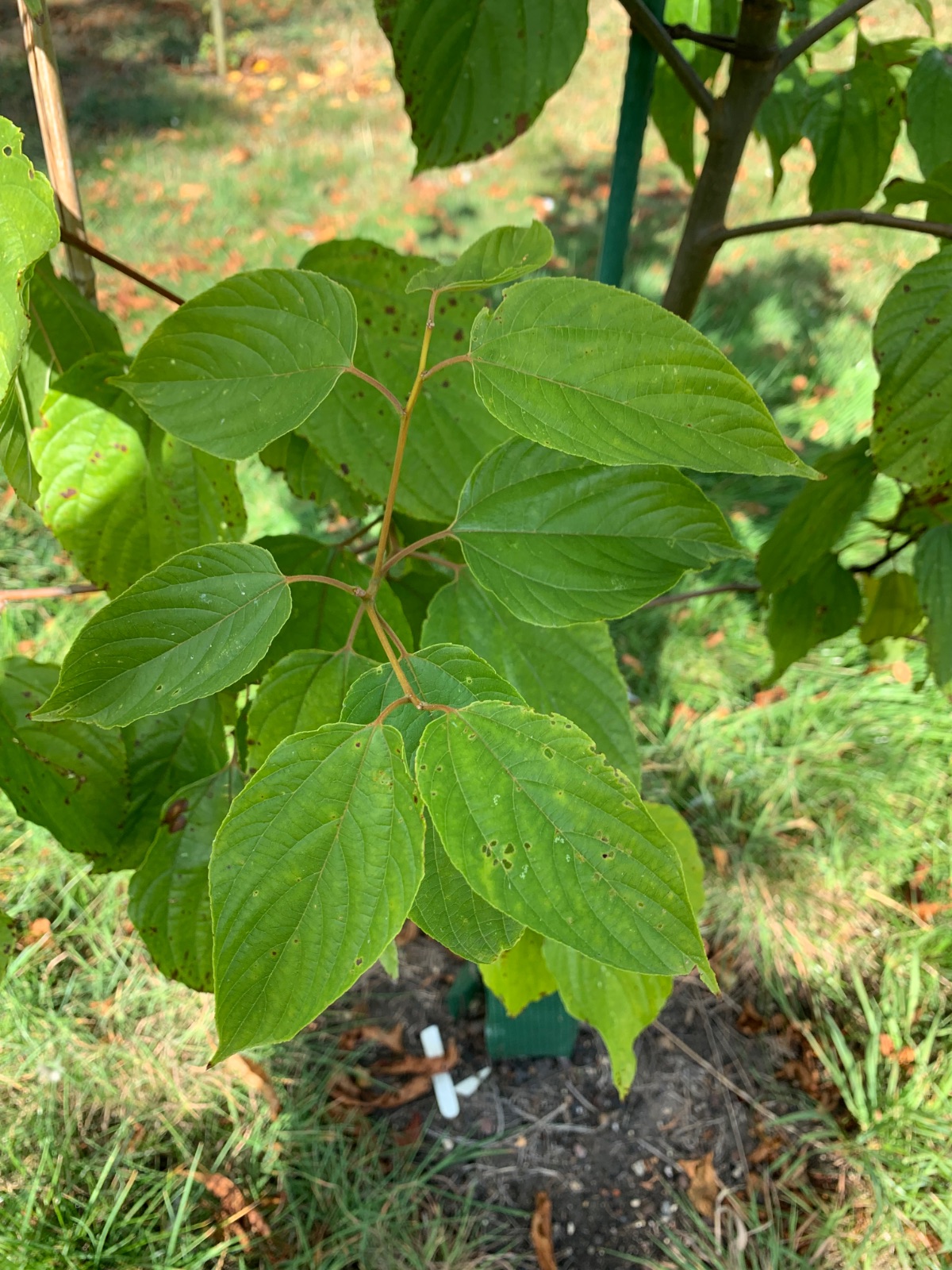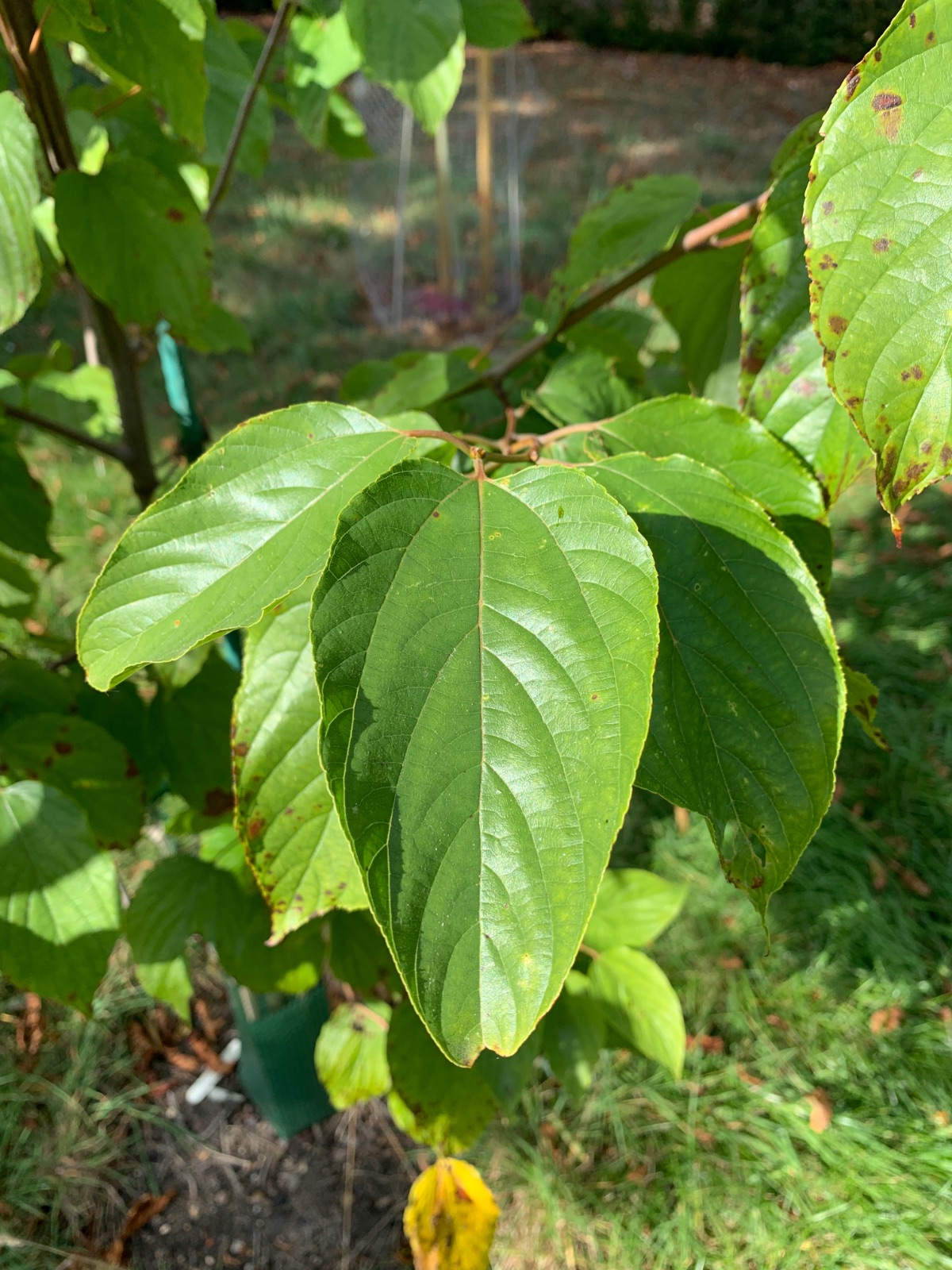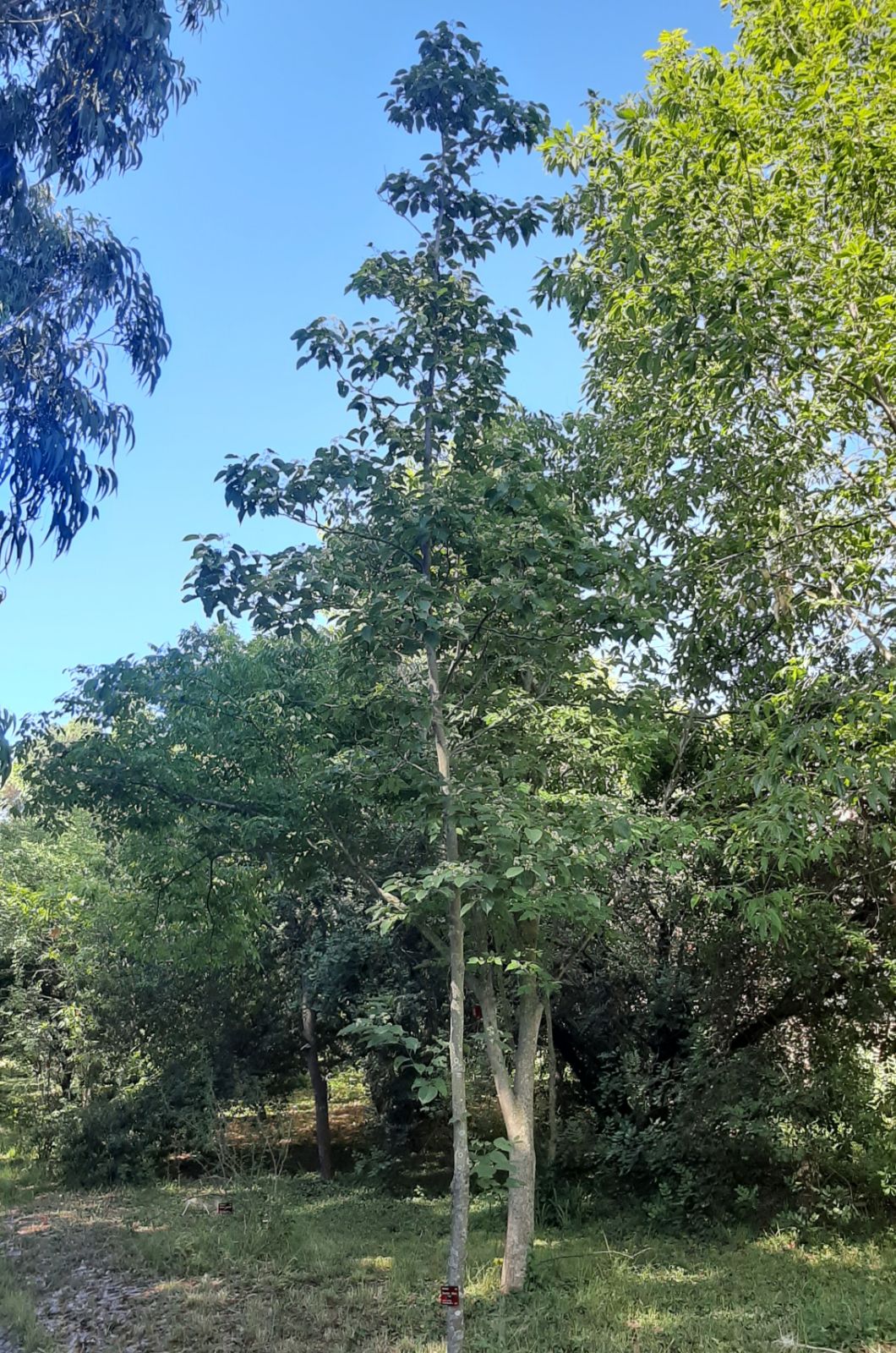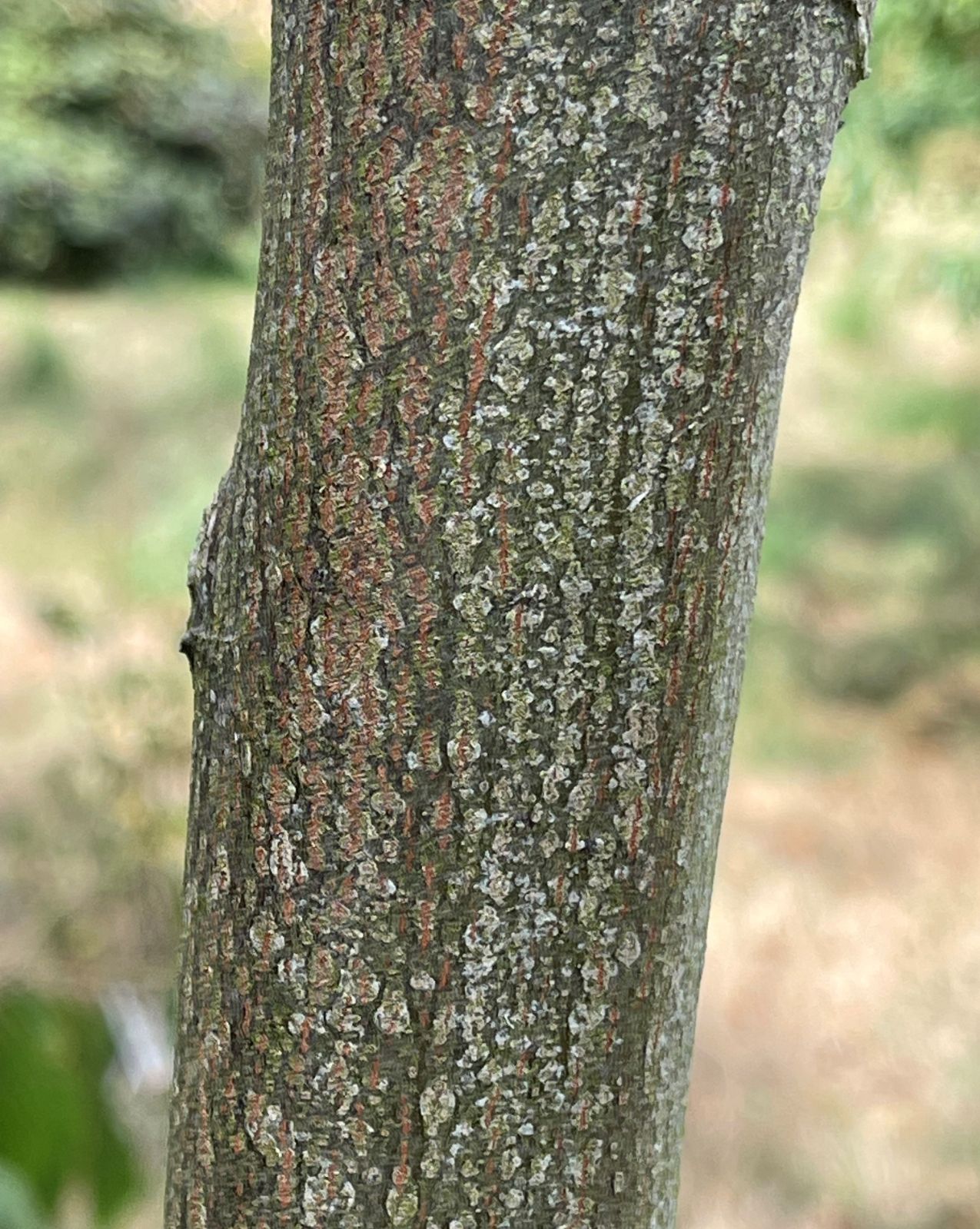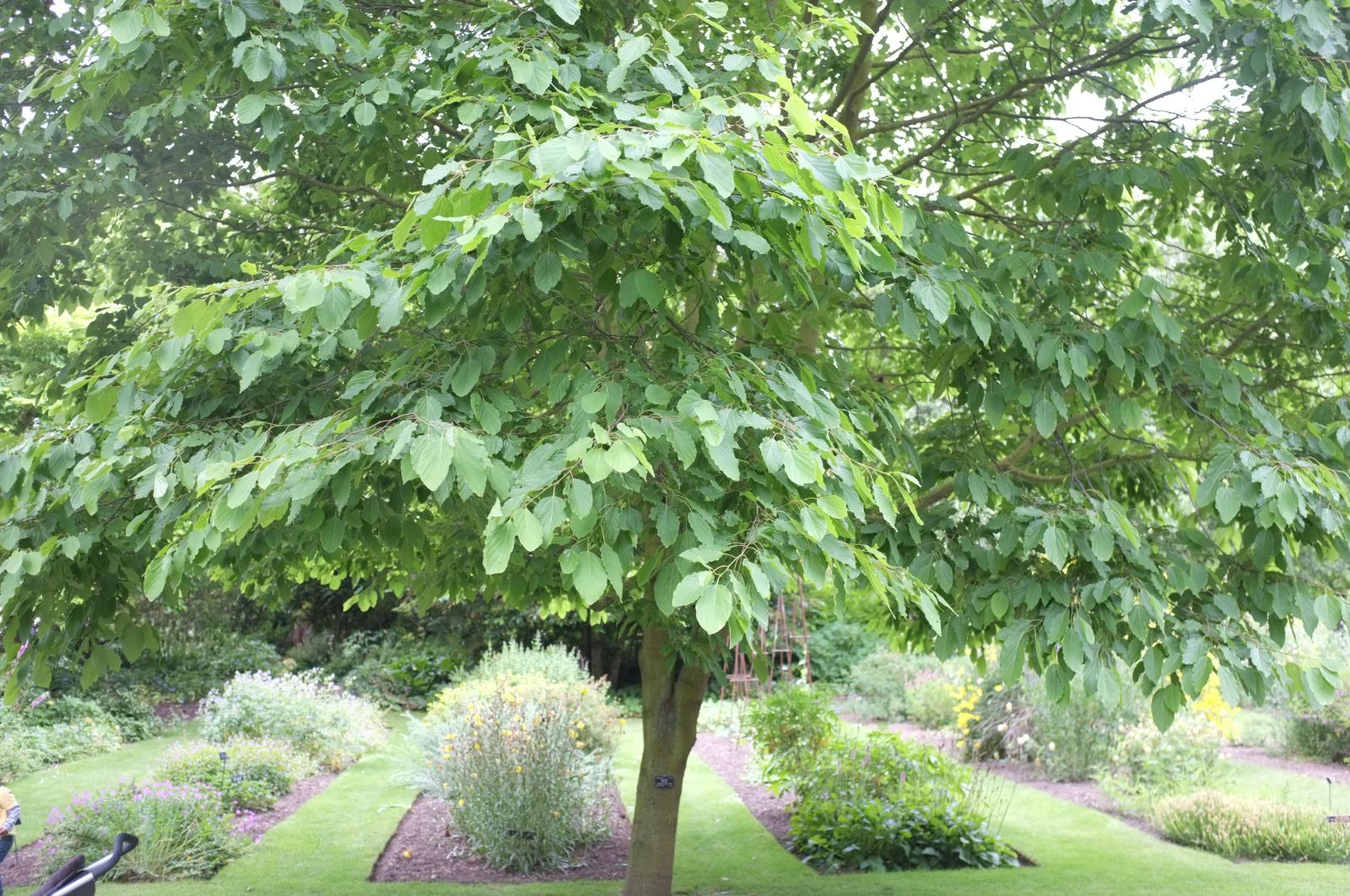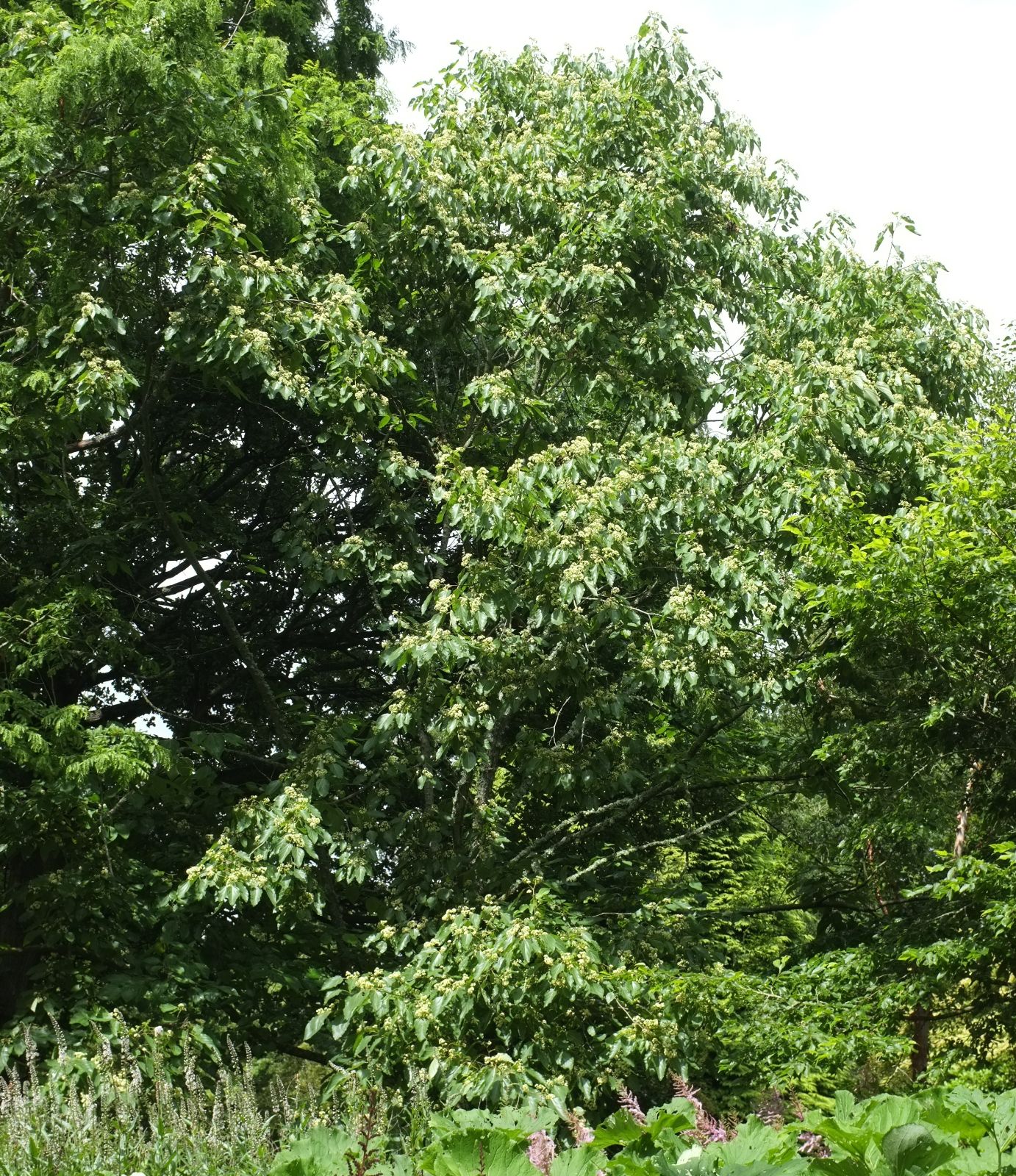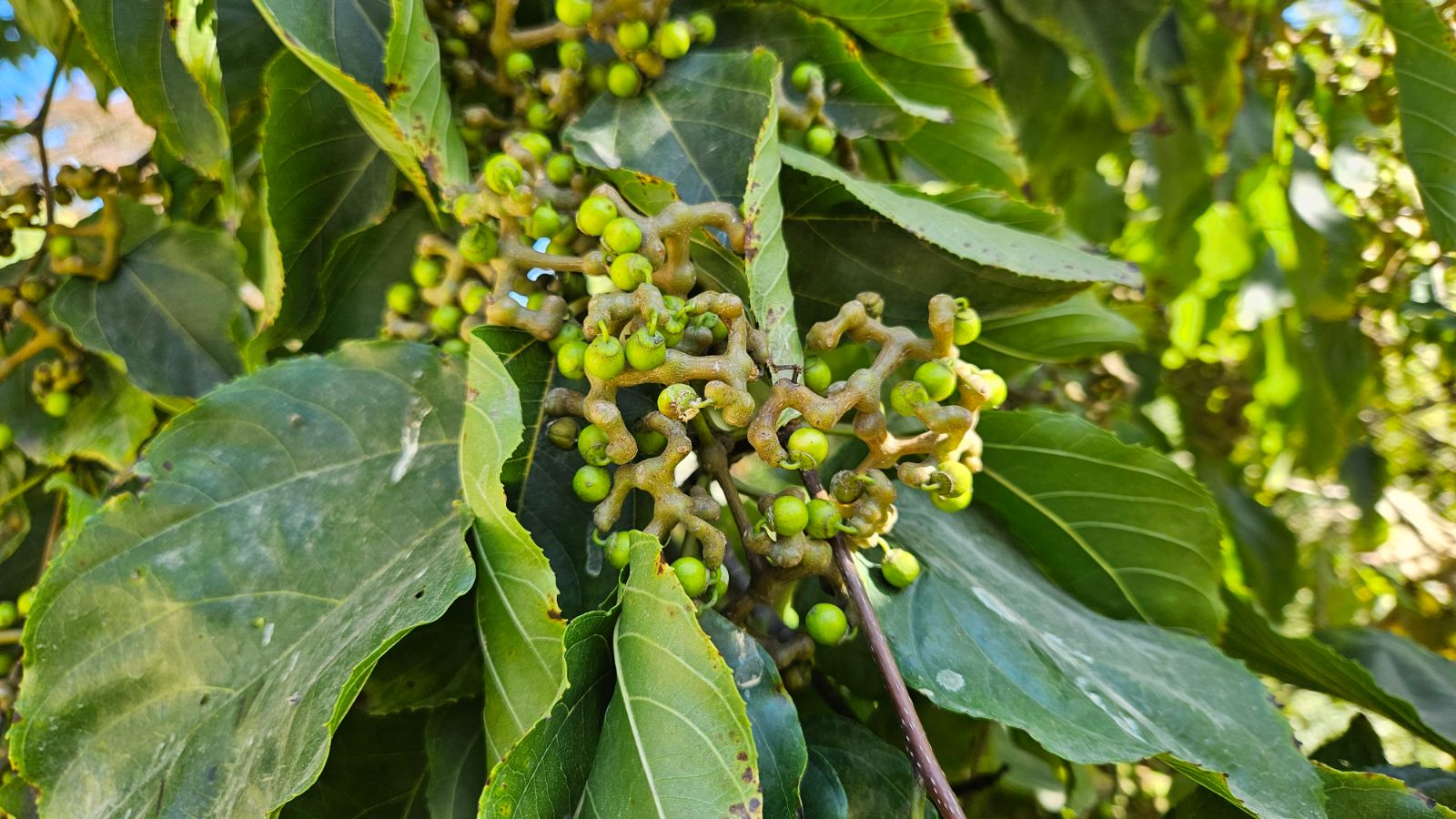Hovenia dulcis
Credits
Article from Bean's Trees and Shrubs Hardy in the British Isles
Recommended citation
'Hovenia dulcis' from the website Trees and Shrubs Online (treesandshrubsonline.
Genus
Synonyms
- H. acerba Lindl.
Other taxa in genus
A deciduous tree 30 ft high (much more in the wild); twigs downy when young. Leaves alternate, oval or heart-shaped, three-veined from the base, from 4 to 7 in. long, 3 to 6 in. wide, taper-pointed, coarsely and unequally toothed, downy beneath, especially on the veins. Flowers in terminal and axillary forked clusters 2 to 3 in. across; the individual flower 1⁄4 in. or so wide, yellow. Flower-stalks swelling unevenly after the decay of the flower into a fleshy, contorted mass, red, and sweet to the taste. They are chewed by the Japanese and Chinese. Fruit about the size of a pea, containing three seeds, and often partially embedded in the fleshy stalks. Bot. Mag., t. 2360.
This species, described from Japan, is recorded as a wild plant from Japan, Korea, and China, but is so widely cultivated throughout eastern Asia that its exact distribution in the truly wild state is uncertain. In the Himalayan region it is grown from Hazara in the west to Bhutan in the east; it is thought by some to be native here and there in those parts, notably Nepal and Kumaon, though Buchanan in 1802 reported the tradition that it had originally come to Nepal from China ‘or some country subject to it’. In 1939 the Japanese botanist Kitamura revived the name H. acerba Lindl. for the Chinese plants, but the distinction he gives between this species (actually described from a plant of Himalayan origin) and H. dulcis do not hold good over all the material in the Kew Herbarium and it seems that only one variable species is involved.
This curious tree is fairly hardy at Kew though the growths may be cut back in winter if not fully ripened. The tree mentioned in previous editions died in 1954 when 33 ft high. The present example, raised from seeds received from Les Barres in 1948, is about 12 ft high (1970).

